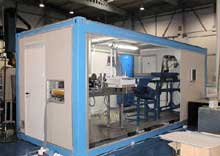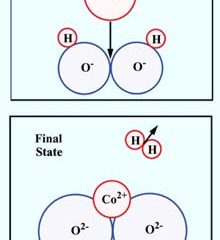This special field revolves around processes for modifying material properties (milling, cooling), composition (filtration, distillation) and type (oxidation, hydration).
Valuable information is available on a broad range of technologies including material separation, laser processes, measuring techniques and robot engineering in addition to testing methods and coating and materials analysis processes.

The technological centre Robotiker from Zamudio (Basque Country) has developed a system of artificial sight to separate metals that come with copper, in order to obtain high purity copper.
To recover copper from old cables it is not something new. However, the recycled copper is not pure, because it is mixed with other metals, such as lead, aluminium and tin. It is quite complicated to separate copper from those components by using mechanical, physical and other methods. Nevertheless it is

Simple method may improve catalysts, nanodevices
A way to help next-generation computers boot up instantly, making entire memories immediately available for use, has been developed by researchers at Sandia National Laboratories and Pacific Northwest National Laboratory.
The patented technique is able to deposit flat, ultrathin metallic layers on very thin oxide layers. The thinness of the deposition reduces material cost and requires less electricity to produce more rapid mag

Ironing must surely be one of the most dreaded household activities. Local entrepreneur Jonathan Nwabueze from Guildford, got so fed up with ironing and being delayed in the morning because of last minute ironing that he invented an iron that works without the need for a board.
His invention, featured on Tomorrow’s World on 24 July 2002, takes the drudgery out of ironing by using a heated vacuum to remove the creases from clothes. The 30-year old entrepreneur said “it can even smooth out wri

Why would an uneven coating of gold on a silica surface excite any interest, much less earn cover-story honors in a respected scientific journal?
This uneven coating – nanoparticles of gold in a layer that changes from very dense to very sparse across a surface of selected molecules – will allow improvements in a wide range of processes and devices. And it’s the decreasing concentration of the coating and overlaying particles, the designed-in gradient, that has chemical engineers and ph

A new type of nanotechnology-based filter that can separate out mixtures of biological molecules has been developed by researchers at the University of California, Davis. The technology could potentially be used, for example, to build small-scale devices for research in genomics by sorting mixtures of different proteins or DNA molecules.
The filter consists of a polycarbonate membrane etched with tiny, evenly-sized pores less than 10 nanometers — a few billionths of an inch — in size. The

It was the early 1990s and building Jefferson Lab’s Continuous Electron Beam Accelerator was in high gear. The Accelerator Division was busy installing some 30 vacuum ion pumps in the tunnel. Simultaneously, above ground in the long, low service buildings sitting over the tunnel, workers were installing and wiring the 7 kV, high-voltage power supplies for those ion pumps.
“With the procedures we had in place we were never in danger,” recalled Rick Gonzales, Accelerator Electronics Suppo